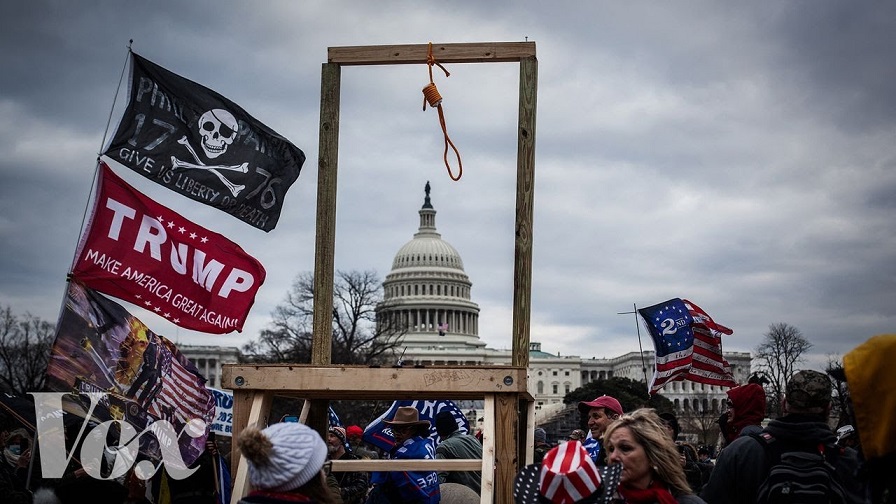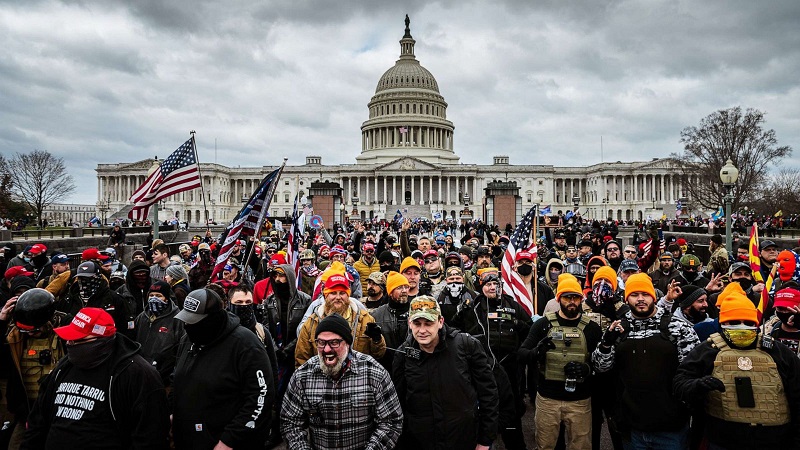Don’t Forget What Happened on January 6th

A recent study shines a light on the demographics and motivations of the January 6th insurrectionists.
I think it’s important not to lose sight of what happened this past January. As time marches on, and the press moves on to the latest stories, I worry that many of us might misrecall the significance of that day, or forget about it altogether. Indeed, it’s quite easy to grow desensitized and reduce moments of import to a footnote of the Trump presidency after the daily affronts to our sense of decency that saturated our media diet the last four years. While those daily utterances of abject nonsense will surely fade from view, episodes like the border separations and the chaos that erupted in the halls of Congress six months ago should remain firmly rooted in living memory. I’ve saved the texts and emails my wife and I received from family and friends who reached out to check on us, as well as the various videos of those at the scene, because I believe that such things ought to be preserved.
I believe this not only because any act of domestic terrorism constitutes a bookmarkable chapter in our nation’s history, but because of the enduring relevance of what transpired. After all, the people responsible are still with us, and more importantly, so are the underlying motivations that saw hundreds of Americans storm the seat of U.S. democracy. Those motives don’t disappear the moment a new president is sworn in. The bulk of the rioters, almost exclusively white and male, acted in furtherance of a Lie premised ultimately, as we’ll see, on entrenched racism. Whether commitments to far-right conspiracies and causes will wane or accelerate in the years ahead, and how to combat them, are questions pertinent to social activists, our election security apparatus, and, perhaps especially, law enforcement and the U.S. military.
According to a recent study from the University of Chicago, and discussed at length above, the rioters were 93% white and 86% male. Hardly surprising, but then there’s this: the vast majority were middle-aged or older, gainfully employed, and married with kids (though for many of them that may have changed in the intervening months). This is inconsistent with what we have found when looking at the socioeconomic makeup of white nationalist and other far-right militia groups like Proud Boys, Oathkeepers, and the Three Percenters, whose members tend to skew younger and match the jobless loner profile.
It’s important to note that although the study found extremist groups were in relatively short supply at the Capitol, it’s possible that the demonstrators who showed up shared an overlapping ideology with these factions despite no formal affiliation. The Southern Poverty Law Center’s 2020 Year in Hate and Extremism report found that many extremists are not formal members of any organization. They are usually radicalized via online platforms and in the process may interact with organized antigovernment groups without joining them. Consequently, we need to look beyond connections to leading extremist organizations in discerning ideologues capable of engaging in hate violence.
Another interesting finding is that more than half of the rioters hailed not from deep-red counties and districts, as we might expect, but from counties that Biden won in 2020. A lot of them in fact were Trump supporters who traveled from the bluest parts of America to participate in the riot. One final takeaway from the study was that these largely white men were more likely to call home places where the white population had experienced marked declines compared to the Hispanic and Black populations, which naturally includes those blue-heavy urban locales Biden shored up.
The director of the project, Richard Pape, traces the driving ideology of those present at the riot to the “Great Replacement” theory, the notion that the rights of white people are being superseded by the rights of minority groups as the latter’s numbers eclipse the former’s in Western democracies. It’s a theory that picked up steam initially in Europe, and was adopted shortly thereafter by neo-Nazi and other white supremacist groups in the United States. The insurrectionists were also united in their belief the election was stolen, of course, but according to Pape and his colleagues, it was profound concerns over racial replacement that made the difference between the violent demonstrators who arrived in Washington and the passive observers who remained at home.
One plausible explanation for the participants’ counties of origin might be that in places where far-right voters are grossly outnumbered by their blue-leaning counterparts, the feeling of being hemmed in by the prevailing ideology better animates one to express their political frustrations in more raucous, even violent ways relative to their co-thinkers in deep-red localities. Thus while sympathy toward GR ideas exists in both red and blue enclaves, it’s the predominantly blue areas where the pro-Trump contingent is more likely to act on their core beliefs because the politics they so despise — and the minorities they resent — are more ubiquitous and harder to avoid. It was the sense of futility bred from the absence of solidarity in offline spaces, combined with the misinfo circulating in online spaces, that spurred them to action.
In order to assess the risk of further seditious efforts by the far-right that could materialize in ways both big and small, Dr. Pape shares a rather troubling poll his group conducted in tandem with the National Opinion Research Council. They asked 1,000 American adults whether they still believe the election was stolen and, additionally, whether they would be willing to personally participate in a violent protest. The results indicate that 4% of American adults, or 10 million people, respond ‘yes’ to both questions, with the strongest predictor being belief in the GR. Worse, we know that active or retired military, law enforcement, and government personnel make up a significant chunk of this figure, as more than 1 in 10 charged in the riot check at least one of those boxes.
In hindsight, the dramatic conflagration witnessed on January 6th of this year was possibly the only way for the Trump era to end: with deluded bands of costumed, antidemocratic, white nationalist radicals armed with bats and chemical spray laying waste to America’s foundational institutions, egged on by their beloved truth-trasher and Deluder-in-Chief. But there is a danger in dismissing what happened as just another disgraceful, mock-worthy day in an era chock full of them. Nothing about the last six months has abated interest in the conspiracist ideas that culminated in the antics back in January. The extremism harbored in the hearts and minds of everyday Americans will be with us for a long time to come, waiting for the right opportunity to strike out against the targets of that hatred.
And while it’s far from clear how best to deprogram those enamored with tenets of extremism, it’s worth reminding ourselves of the central role those beliefs played in the insurrection, and why they continue to pose a material threat to the preservation and strengthening of our democracy. If we focus only on the proximate convictions surrounding the 2020 election as opposed to the guiding force of racial resentment rampant in white society, we run the risk of thinking that the energy of far-right movements will dissipate as the events of January 6th recede further into the past. The election may be over, but the anarchy at the Capitol was always about much more than the fraudulent counting of ballots. It was fueled by an insidious strand of racial paranoia that’s festered among right-wing groups for decades. Those who would brush off the events of that day as mere ‘politics as usual’ underestimate both the scale of the threat before us and the degree to which nutty ideas can inspire mass violence.

Further reading:
- The Capitol Rioters Aren’t Like Other Extremists
- These Are the Rioters Who Stormed the Nation’s Capitol
- Ronan Farrow: Who Were the Rioters on Jan. 6th?
- Off-Duty Police Officers Investigated, Charged With Participating In Capitol Riot
- Here Are The Police Officers And Other Public Employees Arrested In Connection To Capitol Riot
- Police Forces Dealing With Officers Involved in Capitol Riots
- ‘A nightmare scenario’: Extremists in police ranks spark growing concern after Capitol riot
- The warning signs before the Capitol riot
- FBI: U.S. Capitol Violence
- ‘I Alone Can Fix It’ book excerpt: The inside story of Trump’s defiance and inaction on Jan. 6
Image credits: Vox (feature); Jon Cherry/Getty Images


Comments